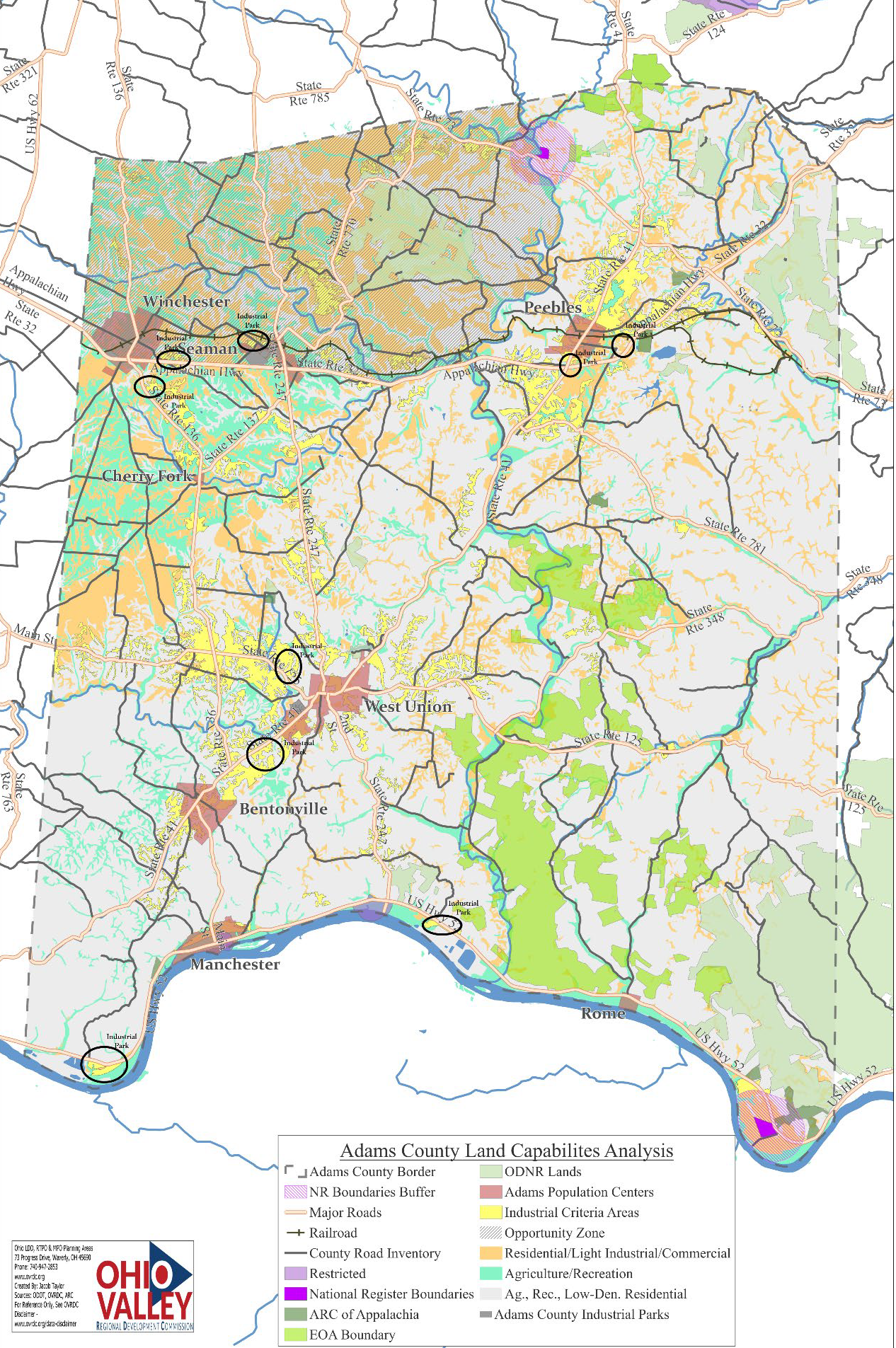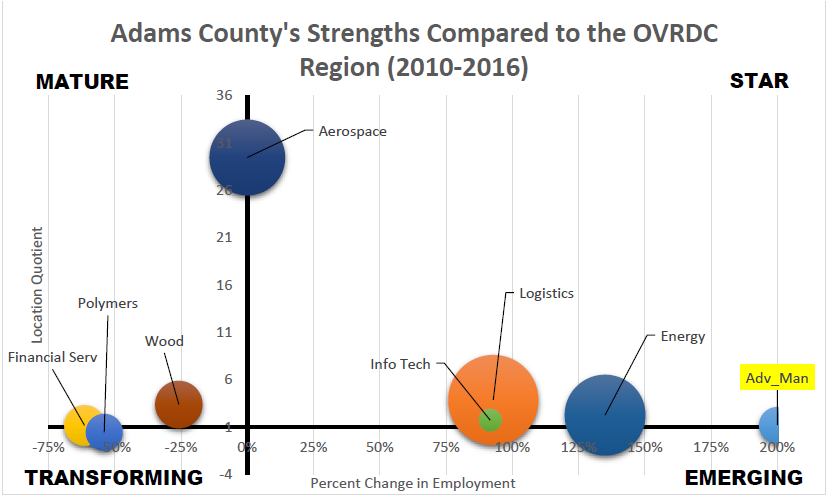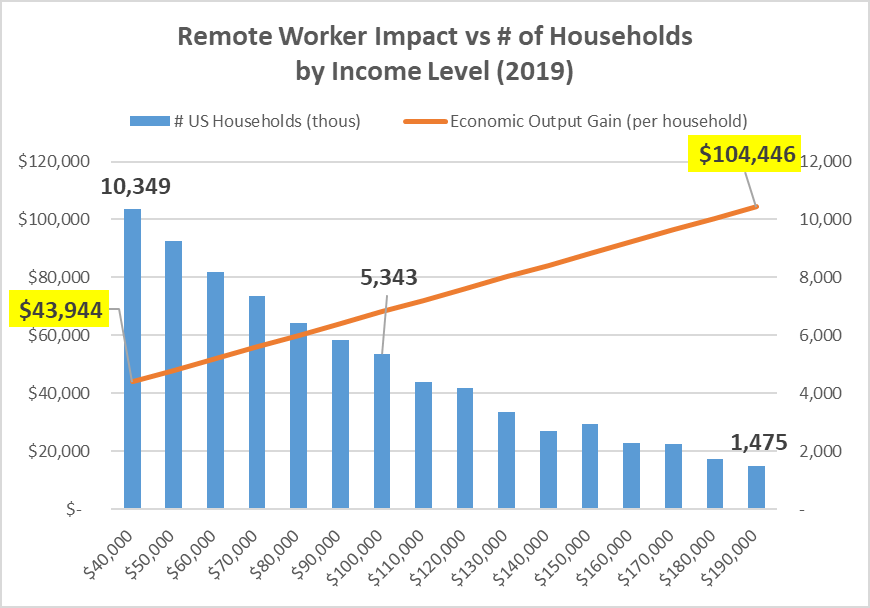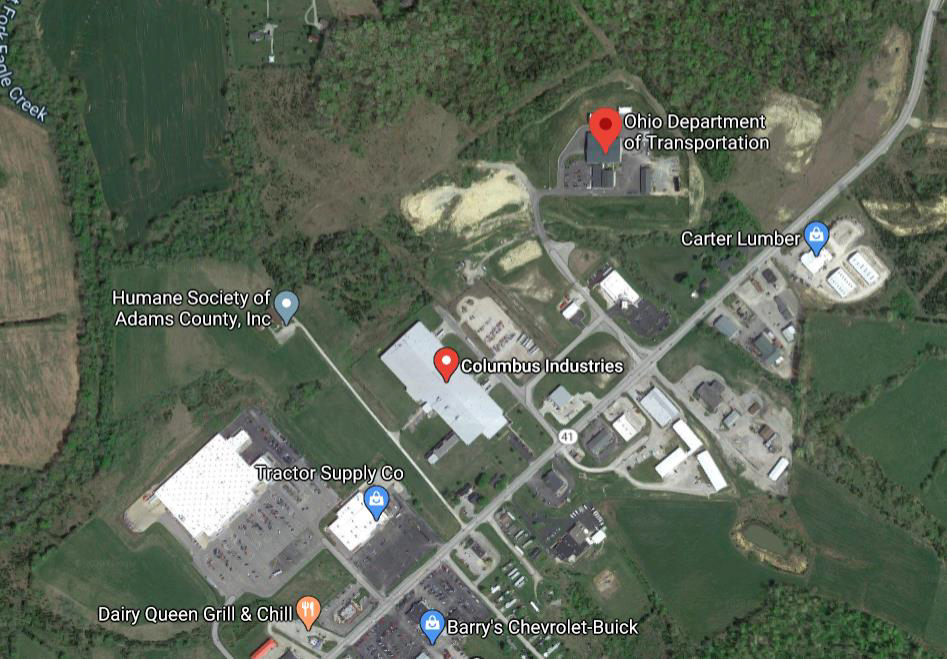BOBCAT Network
In October 2018, the U.S. Economic Development Administration (EDA) funded the Building Opportunities Beyond Coal Accelerating Transition (BOBCAT) Network under the Assistance to Coal Communities (ACC) program. The BOBCAT Network is a joint project of Ohio University’s George V. Voinovich School of Leadership and Public Service (GVS) and the Ohio Valley Regional Development Commission (OVRDC). The project was designed to assist the region with economic diversification and transition with decline in the coal economy. Over a three-year period the BOBCAT Network has catalyzed regional collaborations to accelerate the region’s transition out of the coal economy through a potent portfolio of economic development implementation and actionable applied scholarship in entrepreneurial growth, workforce development, industry cluster expansion, opportunity zone enhancement, and infrastructure investment.
Coal Supply Chain Analyses
The coal supply chain includes all the industries and business related to converting raw material (coal) into finished products and services (electricity, plastics, chemicals, etc.). This also includes industries and business that build machinery used in coal-related industries and the transportation of the coal and coal-products. Our analyses include:
- Skillshed Analysis
- Ecosystem and Dependency Analysis
- Shift-Share Analysis
- Core Competency Analysis
Reports

Feasibility Studies
A feasibility study is an assessment of the practicality of a proposed project or system. Will it succeed and under what circumstances? The Voinovich School has the capability and resources to provide assessments in a variety of areas:
- Cost Benefit Analysis
- Organizational / Managerial
- Financial / Economic
- Retail Developments
Reports

Industry and Business Analyses
These analyses examine the existing make-up of industries and firms in the region and their potential for the future. The investigation of the OVRDC regional industry clusters identified several areas of advantageous enhancement opportunities that would strengthen existing industries and support the development/attraction of additional firms to expand the region’s current clusters. In particular these analyses emphasize a shift towards diversification and away from heavy reliance on one industry or firm. Additionally, the analyses determine areas or growth such as high growth companies and entrepreneurship, but notes that limited capital resources in the region is impacting the ability of the area to capitalize on such growth. Our analyses include:
- Industry Cluster Analyses
- High Growth Company Study
- Entrepreneurial Opportunity Assessment
Reports

Opportunity Zones
provide an exciting new economic development tool, but communities often need assistance to fully capitalize on their ability to generate increased local investments. The Voinovich School can leverage its expertise in venture capital, angel investment, and entrepreneurship support to help communities become investment ready. This includes identifying best strategies for attracting investment and identifying patient capital targets that may invest in these Opportunity Zones. Assistance can also be provided to select communities that lack Opportunity Zones but contain other assets to attract investment
Reports

Remote Working
This research found that the remote working necessitated by the COVID pandemic has accelerated pre-existing trends and revealed market preferences that create opportunities for non-metro communities to both retain and attract remote workers, especially young professionals and working family demographic segments, with preferences for smaller communities previously thwarted by limited local employment opportunities. Remote working is therefore a particularly significant opportunities for primarily rural areas such as the OVRDC region experiencing population and talent loss from reluctant out-migration and thwarted in-migration. Ohio University researchers developed a multi-factor “Rural Remote Work Readiness” assessment matrix that, when applied to the OVRDC region, found that there were numerous significant economic benefits the region could attain through a targeted enhancement program.
Reports

Strategic Planning
provides communities with an effective tool for envisioning their future and taking the steps needed to make it a reality. At the Voinovich School, we have experienced faculty and staff to help:
- Provide a realistic and objective appraisal of strengths, weaknesses, opportunities and threats.
- Develop achievable goals and objectives.
- Engage and communicate with the community.
- Formulate action plans to realize desired goals.
Reports

The Winchester Industrial Park
The BOBCAT Network’s work in Adams County led to the securing of major grant support for a new industrial park in the county. That achievement began with the Voinovich School’s performance of a Strengths, Weaknesses, Opportunities, and Threats (SWOT) analysis which found a major economic development weakness in Adams County was the absence of “shovel ready” industrial sites. Further engagement by Ohio University, OVRDC, and Scurti Consulting (e.g., the recovery coordinator) with numerous public and private sector leaders identified further priorities in natural gas and broadband availability to be addressed in a prospective industrial park. These discussions culminated in an Industrial Park Demand and Financial Analysis feasibility study that both validated the concept and coalesced community support for the plan, leading to a $4.2M grant from JobsOhio to support the Winchester Industrial Park. Located near the Village of Winchester, this site is located along SR 32 and Graces Run Rd. It is near the rail line that passes through northern Adams County, and it also located in the County’s Opportunity Zone.
Reports

